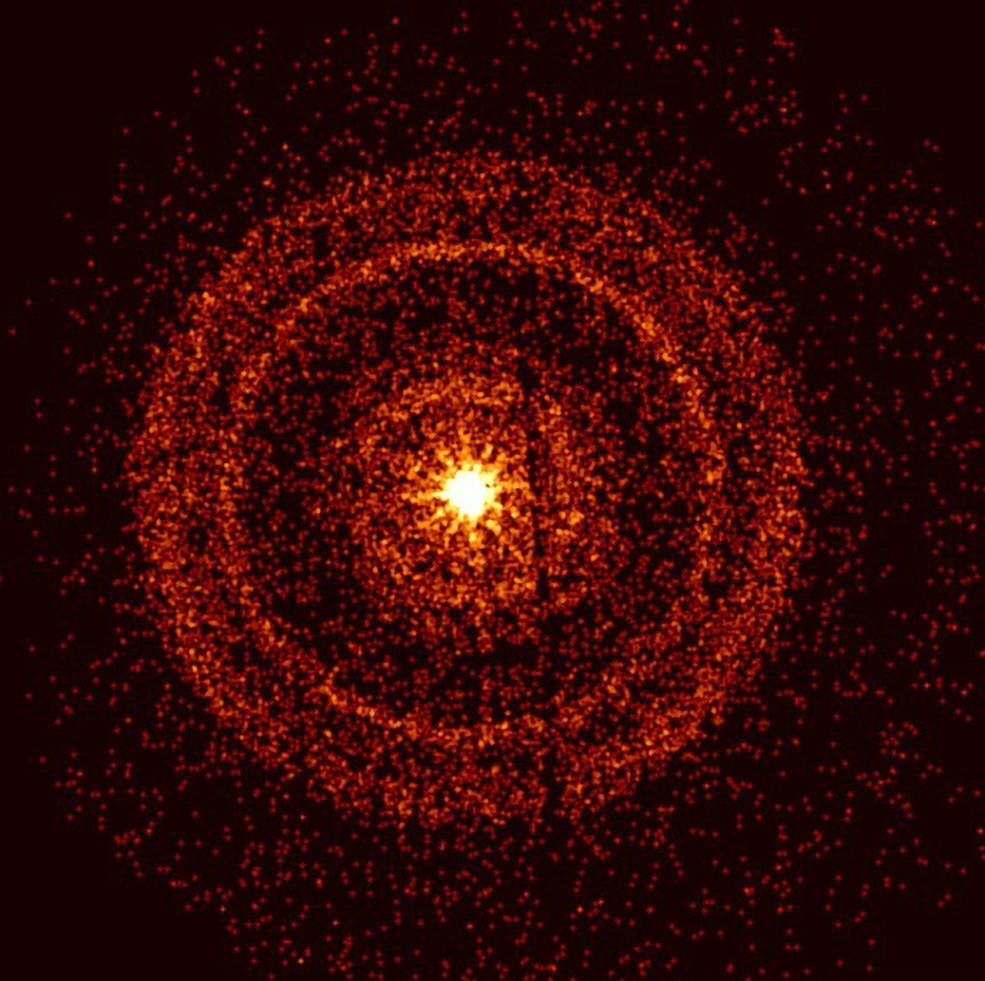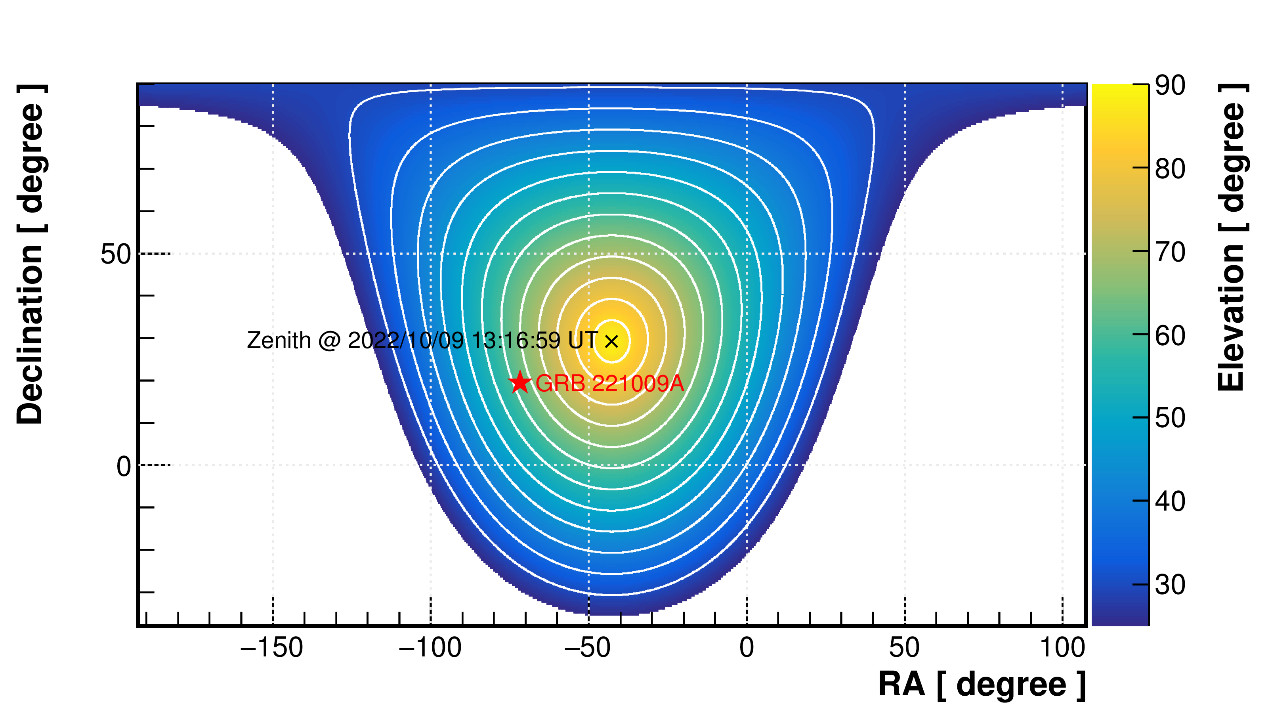
The X-ray telescope from NASA's Neil Gehrels Swift Observatory captures the afterglow of GRB 221009A about an hour after it was first detected. The bright rings form as a result of X-rays scattered from otherwise unobservable dust layers within our galaxy that lie in the direction of the burst. /NASA
The X-ray telescope from NASA's Neil Gehrels Swift Observatory captures the afterglow of GRB 221009A about an hour after it was first detected. The bright rings form as a result of X-rays scattered from otherwise unobservable dust layers within our galaxy that lie in the direction of the burst. /NASA
Chinese astronomers detected the brightest flash of light ever seen from an event likely triggered by the formation of a black hole.
China's three detectors – the Large High-Altitude Air Shower Observatory (LHAASO), orbiting High Energy Burst Searcher (HEBS) and the "Insight" Hard X-ray Modulation Telescope (Insight-HXMT) – observed the unusual bright and long-lasting pulse of high-energy radiation from a gamma-ray burst at 9:17 p.m. Beijing Time on October 9, according to the Institute of High Energy Physics under Chinese Academy of Sciences.
Called GRB 221009A, the explosion and its afterglow have been witnessed by scientists across the world.
The signal, originating from the direction of the constellation Sagitta, had traveled an estimated 1.9 billion years to reach Earth, said U.S. space agency NASA.
It's the first time China has detected a gamma-ray burst with an observatory on Earth and orbiting satellites at the same time. The joint application of the three detectors made a more precise observation in multiple spectral bands.

The graph shows where GRB 221009A is located in the view of the detector LHAASO marked as an X in the center. /Institute of High Energy Physics under Chinese Academy of Sciences
The graph shows where GRB 221009A is located in the view of the detector LHAASO marked as an X in the center. /Institute of High Energy Physics under Chinese Academy of Sciences
Astrophysicist Brendan O'Connor told AFP that gamma-ray bursts that last hundreds of seconds, as occurred on Sunday, are thought to be caused by dying massive stars, greater than 30 times bigger than our sun.
"Gamma-ray bursts in general release the same amount of energy that our sun produces over its entire lifetime in the span of a few seconds – and this event is the brightest gamma-ray burst."
The star explodes in a supernova, collapses into a black hole, then matter forms in a disk around the black hole, falls inside, and is spewed out in a jet of energy that travels at 99.99 percent the speed of light.
The flash released photons carrying a record 18 teraelectronvolts of energy – that's 18 with 12 zeros behind it – and it has impacted long wave radio communications in Earth's ionosphere.
"It's really breaking records, both in the amount of photons, and the energy of the photons that are reaching us," said O'Connor.
Supernova explosions are also predicted to be responsible for producing heavy elements – such as gold, platinum, uranium – and astronomers will also be on the hunt for their signatures.
(With input from AFP)